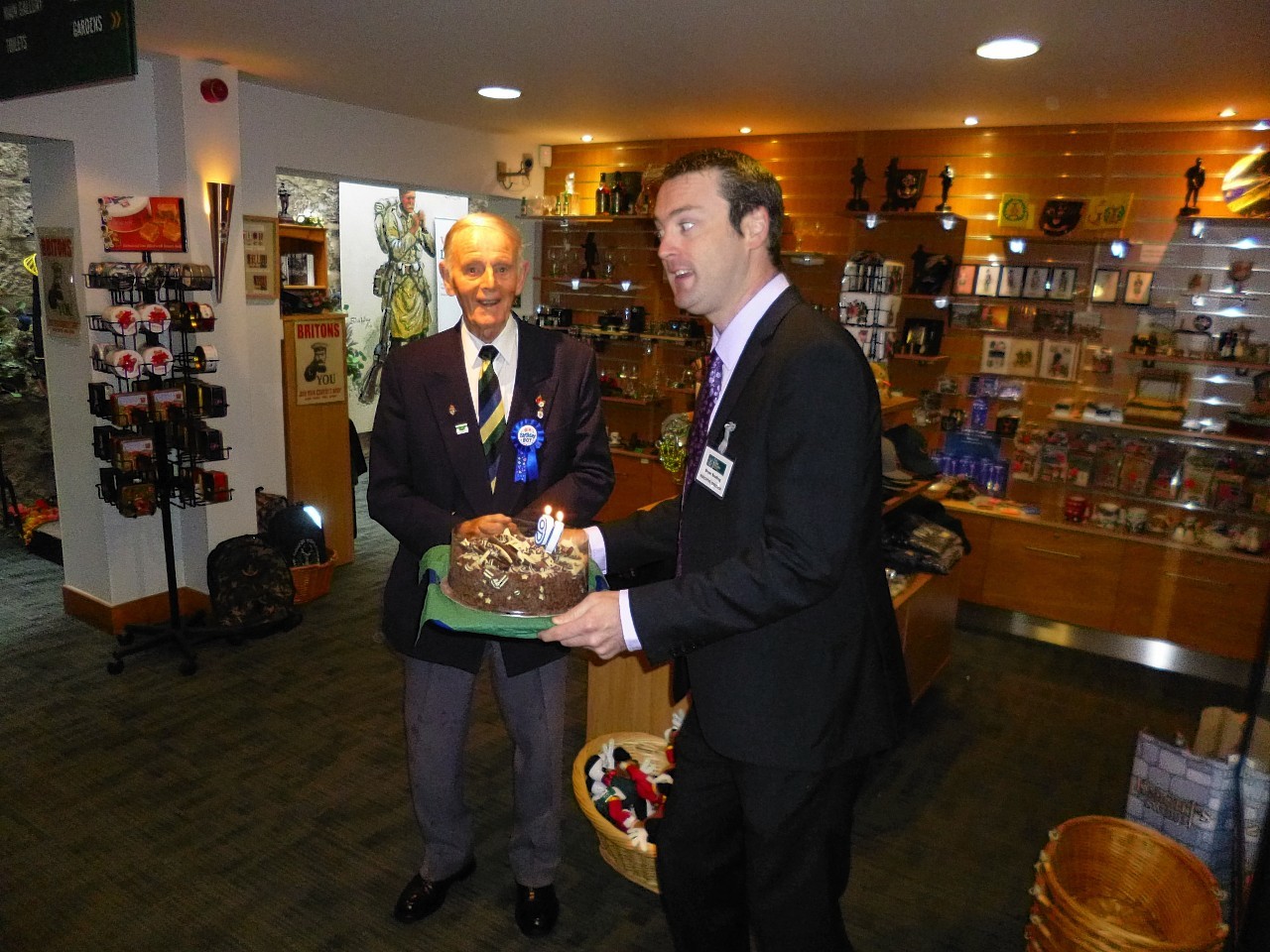A north-east WWII veteran has celebrated his 90th birthday – and admitted he was “very lucky” to have reached the milestone age.
Former Gordon Highlander rifleman Jim Glennie was surrounded by friends and family for the celebration at the Gordon Highlanders Museum in Aberdeen, where he still manages to volunteer.
Turriff-born Mr Glennie was a prisoner of war for nearly a year after being captured by German forces in 1944.
At just 18-years-old, Mr Glennie took part in the Normandy Landings, where hundreds of thousands of troops invaded France and helped to turn the tide of war against the Nazis.
Reflecting on the part he played in such an important historical event, Mr Glennie says he was “too young” to realise the danger he was under.
After surviving the onslaught of gunfire and shelling, his company headed for Caen.
But, a matter of days later, they were ambushed and Mr Glennie was shot twice in his right arm and shoulder.
Reflecting on the incident from his Danestone home, Mr Glennie says he still “feels twinges” 70 years later but credits this incident with saving his life.
He said: “I was sent to hospital, my friend Ronnie who I signed up with wasn’t injured and was sent to Germany.
“He ended up in Poland and was eventually part of ‘the long march’ to Germany [when thousands of prisoners were forced to march through extreme winter conditions towards the end of the war] – he was in an awful state at the end of the war.
“If I hadn’t been shot, I’d have been the same as him.”
After Mr Glennie was released from hospital, he was transferred by cattle train along with hundreds of others to camp Stalag IV-B, near Muhlberg, Germany.
He would spend several months there before being transported to Leipzig, where he was forced to work, filling bomb craters.
Eventually, in April 1945, as the Russian forces advanced towards Berlin, Mr Glennie’s group returned to camp one day to find their German guards had “disappeared”.
They were liberated by American forces a short time later.
He celebrated his birthday on Tuesday at his old regiment’s museum.
Mr Glennie said: “I don’t feel any different, it’s just the legs that get sore.”
